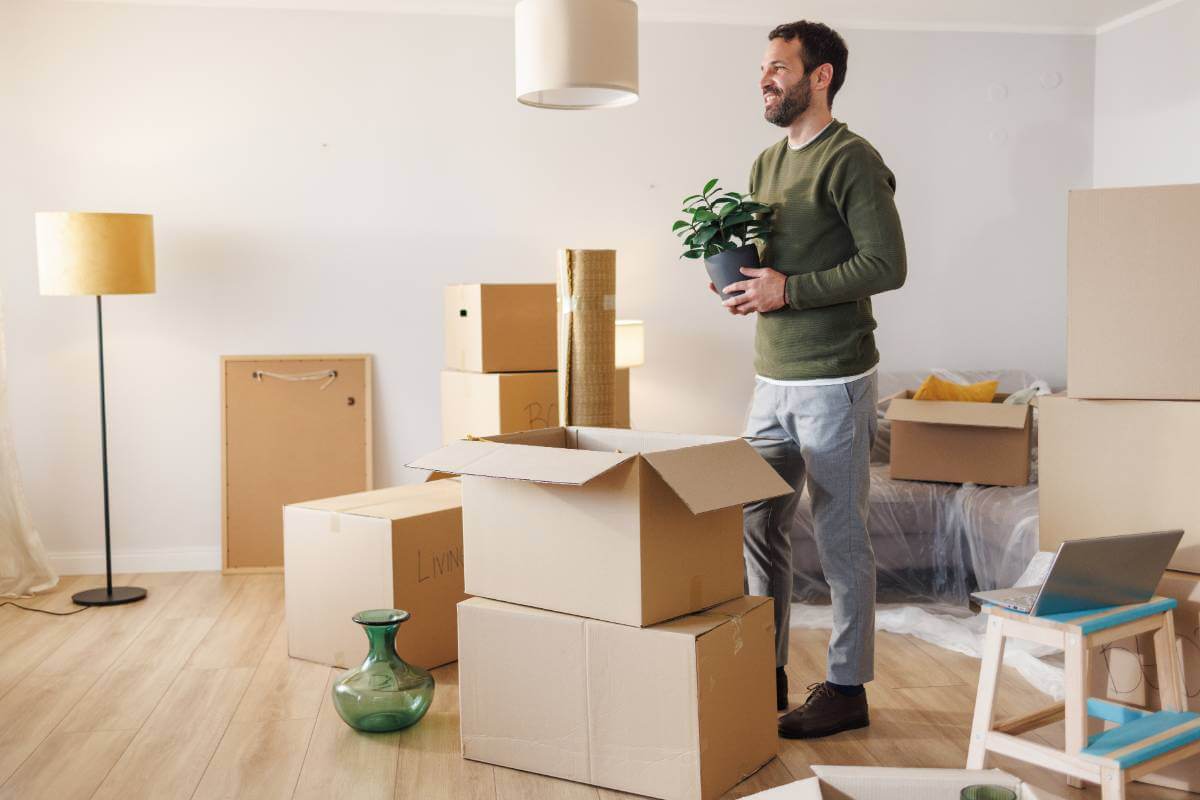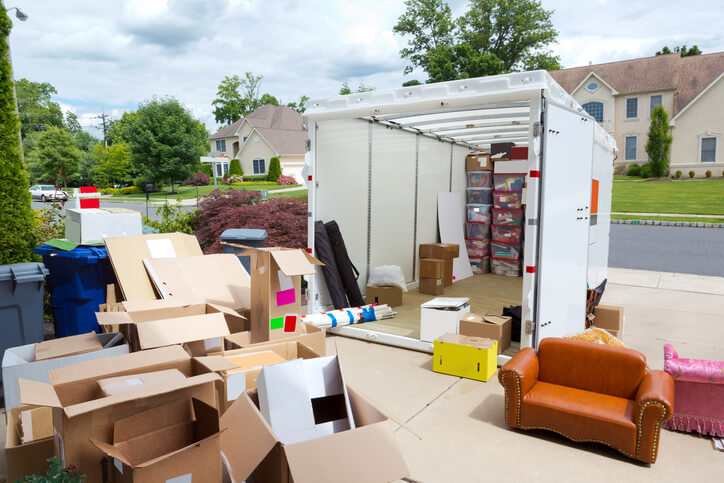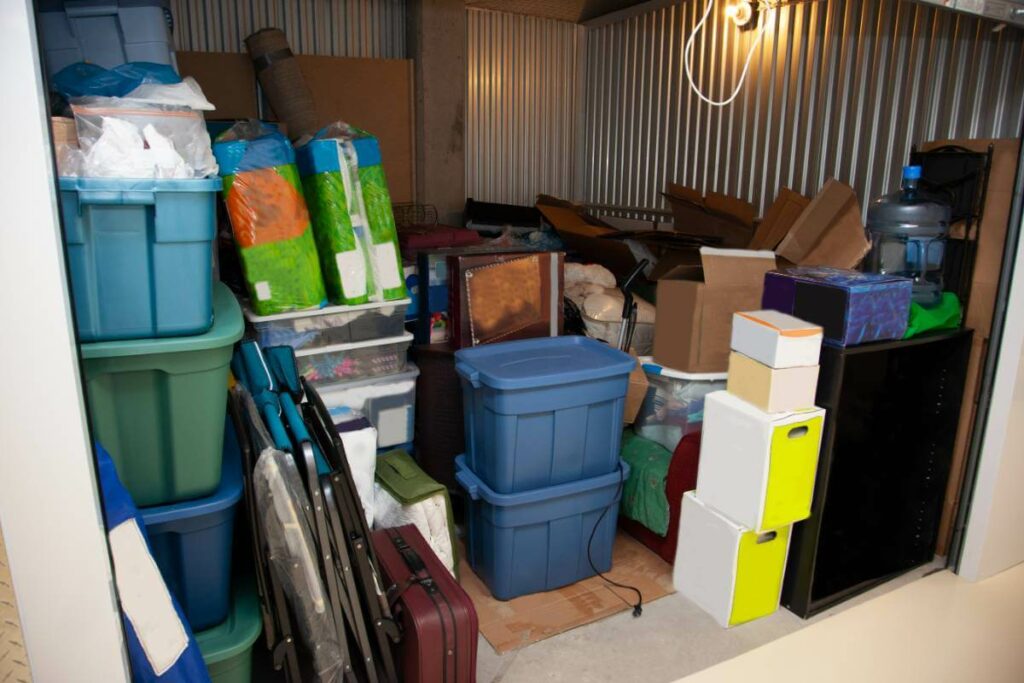What Size Storage Unit for a 1-4 Bedroom House or Apt?

Choosing the right size storage unit is essential to freeing up space in your home, managing a move, or storing seasonal items. However, it can be overwhelming to determine which unit size will best accommodate your belongings without paying for more space than you need.
This guide’s purpose is to lead you through the process of selecting the right storage unit size for your apartment or house, whether you have a one-bedroom apartment or a four-bedroom house. Knowing the different storage unit sizes and what they can hold will help you make an informed decision, ensuring your items are stored safely and efficiently.
Understanding Storage Unit Sizes
Storage units come in various sizes, each offering different space to suit your needs. To make the best choice, it’s helpful to understand both the dimensions and the storage capacity of each unit.
Here’s a brief overview of common storage unit sizes:
- 5×5 Storage Unit: This size resembles a small closet, providing about 25 square feet of space. It’s perfect for storing small items like boxes, holiday decorations, or small furniture.
- 5×10 Storage Unit: Offering 50 square feet, this unit is roughly the size of a walk-in closet. It can hold a couch, chair, small dining set, and several boxes.
- 10×10 Storage Unit: With 100 square feet of space, this unit is ideal for storing the contents of a one-bedroom apartment including appliances, furniture, and boxes.
- 10×15 Storage Unit: This size provides 150 square feet, which can accommodate the contents of a two-bedroom apartment including larger furniture items.
- 10×20 Storage Unit: Offering 200 square feet, this unit is well-suited for storing the contents of a three-bedroom house including major appliances and multiple large furniture pieces.
- 10×30 Storage Unit: This large unit provides 300 square feet of space, making it ideal for storing the contents of a four-bedroom house including large furniture, appliances, and even vehicles.
Create an Inventory of Your Belongings
Before choosing a storage unit, it’s important to create a detailed list of the items you plan to store. This process will help you estimate the amount of space you’ll need and ensure you don’t overlook any important items. Here’s how to get started:
- Make a List: Begin by listing all the items you need to store including furniture, electronics, appliances, and boxes. Don’t forget to include any seasonal items or rarely-used belongings that you might want to keep in storage.
- Note the Condition: Assess the condition of each item. This is especially important as items in poor condition may require extra care.
- Consider Storage Solutions: Think about whether you need any special storage solutions, such as climate-controlled units for sensitive items or shelving to help organize your belongings.
- Estimate Space Requirements: Based on your inventory, estimate the amount of space you’ll need. This will help you determine the most appropriate storage unit size.
By taking the time to create an inventory, you’ll have a clearer understanding of how much space you require.

Storage Needs for Different Apartment/House Sizes
When it comes to selecting the right storage unit size, it’s crucial to match the unit size to the amount of space you have in your home.
Whether you’re living in a compact one-bedroom apartment or a spacious four-bedroom house, understanding how much storage space you need will ensure your belongings are kept safe and organized.
1 Bedroom Apartment
Recommended Unit Sizes: 5×10, 10×10
For a one-bedroom apartment, you’ll need enough space to store essential furniture and household items. A 5×10 unit is a great option if you’re looking to store the basics, such as:
- A queen-sized bed and mattress
- A small sofa or loveseat
- Several boxes of clothes, kitchen items, and décor
If you have larger furniture or more items, a 10×10 unit will provide additional room to accommodate:
- A dining table and chairs
- Additional furniture like a dresser and nightstands
- Boxes of personal items and seasonal decorations
2 Bedroom Apartment
Recommended Unit Sizes: 10×10, 10×15
A two-bedroom apartment generally requires a bit more space, particularly if you have additional furniture or larger items. A 10×10 unit can typically hold:
- Two full-sized beds or a king-sized bed
- A small living room set including a couch and chairs
- Kitchen appliances, dining table, and chairs
For those with more belongings or larger furniture, a 10×15 unit is ideal and can accommodate:
- Larger living room furniture including a sectional sofa
- Multiple dressers, nightstands, and wardrobes
- Boxes of miscellaneous items, home décor, and electronics
3 Bedroom Apartment/House
Recommended Unit Sizes: 10×15, 10×20
If you’re moving out of a three-bedroom apartment or house, you’ll need a unit that can hold the contents of multiple rooms. A 10×15 unit might be suitable if you’re storing:
- Three full-sized beds with frames
- A living room set with a large sectional and coffee table
- Several large kitchen appliances and a dining set
If you have more bulky furniture or a larger household, a 10×20 unit is a better option, which can accommodate:
- Multiple bedroom sets (beds, dressers, nightstands)
- Living room furniture including a sofa, chairs, and entertainment center
- Larger kitchen appliances and a dining table with chairs
4 Bedroom House
Recommended Unit Sizes: 10×20, 10×30
For a four-bedroom house, you’ll likely need a larger storage unit, particularly if you’re storing items from multiple rooms. A 10×20 unit can typically fit:
- Multiple bedroom sets including beds, dressers, and nightstands
- A full living room set with a large sectional, coffee table, and entertainment center
- Larger appliances, dining room furniture, and many boxes
If you’re dealing with an entire household worth of items or larger furnishings, a 10×30 unit will provide plenty of space for:
- Multiple bedroom and living room sets
- Full kitchen and dining room sets
- Additional items like outdoor furniture, bikes, and storage bins
Additional Factors to Consider
When choosing the right storage unit for your needs, several important factors beyond size should be considered to ensure your belongings are well-protected and accessible.
Climate Control
Climate-controlled units are crucial if you’re storing items sensitive to temperature or humidity, such as electronics, wood furniture, or important documents. These units maintain a consistent temperature and humidity level, protecting your items from the effects of extreme weather.
Consider a climate-controlled unit if you live in an area with significant seasonal changes or plan to store items for an extended period.
Accessibility
Think about how often you’ll need to access your belongings. If you’ll be making frequent visits, choose a storage unit that offers 24/7 access or is conveniently located near your home or workplace. Drive-up access can also be beneficial if you’re storing heavy or bulky items, allowing you to load and unload directly from your vehicle.
Packing Tips
Proper packing can maximize your storage space and keep your items safe. Use sturdy boxes and label them clearly.
Think about using shelving to keep items organized and accessible. Place heavier items at the bottom and lighter items on top. If you’re storing furniture, disassemble it to save space and wrap it in protective covers to prevent damage.

Tips for Saving Money on Storage Unit Rentals
Storage costs can add up, but there are ways to save. Shop around and compare prices from different storage companies.
Look for promotions or discounts, especially if you’re willing to commit to a longer rental period. Consider downsizing your unit if possible. Sometimes, you can fit everything into a slightly smaller unit with efficient packing.
Finally, consider whether you need all the items you plan to store. Decluttering beforehand can reduce the space you need, saving you money in the long run.
What to Look for When Visiting a Storage Facility
Visiting a storage facility in person is an important step to ensure it meets your needs. Here are key aspects to consider during your visit:
- Security Measures: Check if the facility has robust security features like surveillance cameras, gated access, and individual unit alarms. Knowing that your belongings are well-protected, a secure facility will offer you peace of mind.
- Cleanliness and Maintenance: Pay attention to the cleanliness of the facility. A well-maintained site suggests that the management takes pride in the property and will likely take good care of your stored items. Look for signs of pests or water damage, as these can be red flags.
- Fair Pricing: Before choosing a storage unit size, ensure the location offers units in your price range. Ask about the cost and any discounts that may be available.
- Customer Service: Interact with the staff and assess their professionalism and willingness to assist you. Friendly and knowledgeable staff can make your storage experience much smoother.
Tips for Saving Money on Storage Unit Rentals
Renting a storage unit doesn’t have to break the bank. Here are some tips to help you save money:
- Compare Prices: Don’t settle on the first facility you find. Shop around and compare rates at different locations. Sometimes, facilities offer promotions or discounts that can significantly lower your costs.
- Downsize Your Unit: Carefully assess the items you plan to store. With efficient packing, you might be able to fit everything into a smaller unit.
- Take Advantage of Promotions: Many storage facilities offer discounts for new customers, referrals, or long-term rentals. Be sure to ask about any promotions that could reduce your rental fees.
- Use Your Space Wisely: Maximize your storage space by stacking items and using shelving. The better you organize your unit, the less space you’ll need.
- Consider Location: Units closer to the city center are often more expensive. If you don’t need frequent access to your items, consider a facility farther from the city, where rates are typically lower.
What Size Storage Unit Do You Need?
Choosing the right storage unit for your needs involves finding a facility that offers the right combination of security, accessibility, and affordability.
At Shield Storage, we are committed to helping you find the perfect storage solution. Contact us today or visit our facilities to learn more about our storage options.
FAQs
How Much Does a Storage Unit Typically Cost?
The cost of a storage unit varies widely depending on the size, location and features such as climate control. On average, you can expect to pay anywhere from $50 to $400 per month for a standard unit. Prices tend to be higher in urban areas and for units with added amenities like 24-hour access or enhanced security.
What Security Features Should I Look For?
When choosing a storage facility, prioritize locations with strong security features. Look for facilities with surveillance cameras, gated access, individual unit alarms, and well-lit areas. Some places even offer 24/7 monitoring to give you extra peace of mind.
Can I Store Large Appliances in a Storage Unit?
Large appliances such as refrigerators, washers, and dryers can be stored in a storage unit. However, they must be prepared properly. Clean and dry them thoroughly before storage to prevent mold and mildew.
What Items Are Typically Not Allowed in Storage Units?
Most storage facilities have a list of prohibited items. Generally, you cannot store perishable food, hazardous materials (like gasoline or paint), or illegal items.
Some places also restrict the storage of live plants or animals. Always check with the facility for their specific rules before storing your items.
Are There Any Insurance Options for Stored Items?
Shield Storage facilities offer insurance options as part of the rental agreement or as an add-on. This insurance covers your belongings against theft, fire, and other unforeseen events. It’s also worth checking if your homeowner’s or renter’s insurance policy covers items stored off-site.
Can I Share a Storage Unit With Someone Else?
Sharing a storage unit with a friend or family member can be a cost-effective option. It’s important to establish clear agreements on access, payments, and the items each person is storing. Make sure both parties are listed on the rental agreement to avoid any disputes down the line.